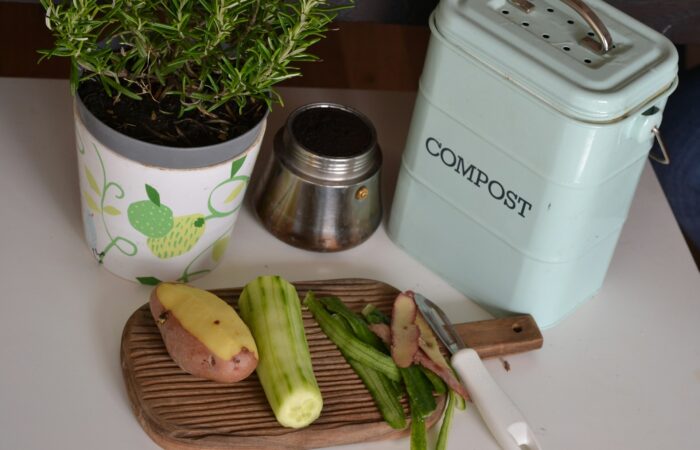
Adopting a sustainable lifestyle might seem like an expensive and complicated endeavor. However, with the right approach, creating a greener, eco-friendly lifestyle is achievable—even on a tight budget.
This guide will show you how to take simple, affordable steps to live more sustainably while also saving money in the long run.
Whether you’re a city dweller or live in a suburban area, these actionable tips will help you integrate sustainability into your daily life without straining your wallet.
Why a Sustainable Lifestyle Makes Sense
Sustainability is not just about saving the planet; it’s a lifestyle choice that can lead to reduced expenses and a healthier way of living. By focusing on eco-friendly habits, you reduce waste, conserve energy, and lower your overall carbon footprint.
And the best part? These changes often align with budget living principles, helping you save more money than you’d expect. From conserving energy at home to reducing food waste, here’s how you can make sustainable living work for you starting today.
Start Small for Lasting Change
Making sweeping lifestyle changes can feel overwhelming, so start with manageable, budget-friendly steps.
Reuse What You Already Have
You don’t need to buy a new set of “green” products to live sustainably. Look around your home and repurpose items you already own. For instance:
- Use old jars as storage containers instead of buying plastic bins.
- Repurpose old clothes into cleaning rags rather than purchasing disposable wipes.
- Switch to reusable bags, which you might already have lying around, for grocery runs.
Focus on Reducing Waste
Cutting back on waste is one of the simplest ways to live sustainably. Here’s how:
- Buy in bulk to reduce single-use packaging. Opt for refill stations or reusable containers.
- Compost food scraps, even if you have a small backyard or balcony. Many urban neighborhoods now offer composting programs.
- Avoid disposable items by switching to reusable alternatives like water bottles, coffee cups, and food wraps.
Save Money by Repairing Instead of Replacing
When something breaks, repair it if possible. For example:
- Patch holes in clothing or shoes.
- Fix broken electronics rather than buying new ones.
- Learn basic DIY home repairs to avoid replacing expensive items.
Every small change can collectively contribute to an impactful shift in your sustainable lifestyle.
Simple and Affordable Eco-Friendly Tips
Living eco-consciously doesn’t have to cost a fortune. These practical eco-friendly tips will help you reduce expenses while staying on track with your sustainability goals.
Save Energy at Home
- Unplug appliances and electronics when they’re not in use to reduce phantom energy consumption.
- Replace old incandescent bulbs with energy-efficient LEDs, which may have a higher upfront cost but last longer and use significantly less electricity.
- Use natural light during the day and limit heating or air conditioning by insulating your windows and doors.
Cut Down on Disposable Products
- Opt for a reusable razor instead of disposable ones.
- Avoid paper towels and plastic utensils by switching to washable cloth towels and bamboo cutlery.
- Store food in reusable glass containers rather than single-use plastic baggies.
Walk, Bike, and Carpool
Transportation is often a significant contributor to carbon emissions. Save on fuel costs and make a positive environmental impact by:
- Walking or biking for short trips.
- Joining local carpool groups for commuting or school drop-offs.
- Taking public transportation when available or looking into electric scooter rentals in urban areas.
Sustainable Grocery Shopping
One of the simplest areas to start your sustainable lifestyle transformation is your grocery habits.
Shop Locally
Support farmers’ markets and local businesses when possible. Locally sourced produce often requires less transportation, reducing carbon emissions. Plus, it’s fresher and usually more affordable when bought in season.
Plan Meals to Reduce Food Waste
Planning your meals and sticking to a grocery list helps prevent overbuying and food waste. If leftovers are common in your household, freeze them for future meals instead of letting them spoil.
Choose Sustainable Alternatives
- Buy reusable produce bags instead of plastic ones.
- Look for packaging-free bulk items or brands with compostable packaging.
- Explore plant-based options if affordable, as they generally have a lower environmental impact compared to meat-based products.
Make Conscious Consumer Choices
Opt for Secondhand Shopping
Save a significant amount of money and reduce demand for fast fashion by shopping at thrift stores or online marketplaces. Whether you’re looking for clothes, furniture, or electronics, secondhand shopping is both sustainable and budget-friendly.
Focus on Quality Over Quantity
When making purchases, prioritize quality over quantity. A durable, long-lasting product will always be more cost-effective than a cheaply made item you’ll need to replace in a few months.
Look for Rewards and Incentives
Some brands and companies offer incentives for making sustainable choices. For example, many coffee shops provide discounts for using a reusable cup or returning packaging for recycling. Research deals in your area to save even more while going green.
Join a Community of Like-Minded Individuals
Living sustainably is easier with the support of a community. Connect with local groups, attend eco-friendly workshops, or join online forums focused on sustainable living.
Sharing resources and advice can provide valuable budget living insights, helping you further refine your green lifestyle without extra costs.
Share and Swap
Instead of buying something new, consider sharing with friends or swapping items within your community. From clothes to kitchen gadgets, sharing resources reduces consumption and fosters connections.
Commitment to Mindful Budget Living
Transitioning to a sustainable lifestyle is a rewarding process that benefits both the planet and your wallet. Remember, every small decision you make in favor of sustainability can have lasting impacts over time.
By incorporating the tips above, you’ll not only reduce your environmental footprint but also cultivate a more conscious, thoughtful way of living.
Next Steps to Living Sustainably
Living a sustainable lifestyle on a budget isn’t just possible; it’s an incredibly rewarding way to align your values with your daily actions.
Start small by making simple swaps at home, then gradually expand your efforts into areas like transportation, shopping, and food. The key is consistency.
For more tips, recommendations, and inspiration, subscribe to our monthly eco-living newsletter. Together, we can create a greener, brighter future!
Subscribe To Get Update Latest Blog Post
No Credit Card Required









